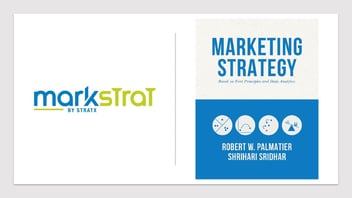4 Key Marketing Trends to Know in 2022
%20(LinkedIn%20Sponsored%20Content)%20(72)-min.png?width=619&name=Green%20and%20Black%20Live%20Podcast%20Guesting%20Instagram%20Post%20(600%20%C3%97%20250%20px)%20(LinkedIn%20Sponsored%20Content)%20(72)-min.png)
Studying marketing means understanding tried and tested marketing theories and testing them against real-world examples. This includes understanding key concepts such as digital marketing, segmentation & positioning in a digital sensitive market, and brand portfolio management. But aside from understanding strategies, effective marketers need to keep up with the marketing landscape, which is constantly evolving thanks to shifts in mainstream values and developments in technology. To help, we’ve listed some of the biggest marketing trends of 2022.
Digital Marketing Prevails
Because modern consumer relies on the internet for shopping, research, entertainment, and communication, digital marketing has become one of the most popular components of marketing. Trends that didn’t exist a few decades ago now dominate the marketing sphere. There’s search engine optimization (SEO), a strategy that attracts organic traffic by boosting a website’s visibility on search engines. There’s also PPC, an internet marketing model that involves buying ad placements on high-traffic websites.
For brands to thrive in 2022, marketers need to keep up with emerging trends in SEO and PPC. The algorithms of popular search engines, namely Google, have only gotten smarter. Gone are the days of keyword stuffing — Google now prioritizes high-quality content with longer word counts. On the other hand, in the world of PPC, paid video ads are in vogue.
Inbound Marketing Will Remain Popular
Outbound marketing or interruption marketing refers to marketing processes like cold-calling, media buying, and pop-up ads, which spread brand messages by actively initiating conversations with potential customers. In turn, inbound marketing is about providing valuable content to attract customers to a business. Examples of content include blogs, videos, and social media posts.
Today’s customers don’t want to be told what to buy. They want to make their own choices. Brands can influence their decisions by building trust, which they achieve by providing informational and entertaining content tailored to their target audiences. And since today’s SEO algorithms prioritize quality, creating valuable content for inbound marketing also boosts search engine visibility.
Short-Form Videos Will Dominate
In the world of SEO, long-form articles prevail. Longer articles have more space to go in-depth and meet Google’s standards for quality. However, in the world of video, shorter content dominates. Video audiences behave differently than article readers. Usually, video platform users are quicker to scroll their feeds and want content that captures their attention without taking too much of their time.
The explosive popularity of the video app TikTok exemplifies this trend. As of the last quarter of 2021, TikTok had about 1.2 billion active users. It became one of the most downloaded apps of recent times, attracting about 18% of all internet users aged 18 to 64. The platform thrives because users appreciate its entertaining and easy-to-digest content. Most videos fall in the 21-to-34 second range.
Sustainability Will Become a Bigger Priority
As shown in the case of inbound marketing, today’s marketing strategies emphasize building trust and strengthening relationships with potential customers by aligning with their values. And today’s customers value social responsibility. Studies show that sales grow between 1% to 3% when businesses put in the effort to improve society, protect the environment, and correct past harmful practices.
Today’s marketing efforts succeed when they minimize focus on products and services and instead emphasize brand values and missions. Marketing efforts become especially successful when they promote sustainability. In 2020, the furniture store IKEA embraced the circular economy by introducing a furniture buyback program. Through the program, IKEA customers could sell old IKEA furniture back to the store and receive 50% of their product’s original price. IKEA would later sell those products through their AS-IS department. The program succeeded in three things: preventing further waste generation, promoting sustainability in IKEA customers, and generating good publicity for IKEA.
Marketing efforts cannot succeed if marketers do not stay on top of mainstream sentiments and emerging tech trends. To thrive in 2022’s marketing landscape, marketers need to pay attention to digital marketing, inbound marketing, and sustainability.
Guest post by Ricci Jordyn - Tech and Business Writer


%20(LinkedIn%20Sponsored%20Content)%20(93)-min.png?width=352&name=Green%20and%20Black%20Live%20Podcast%20Guesting%20Instagram%20Post%20(600%20%C3%97%20250%20px)%20(LinkedIn%20Sponsored%20Content)%20(93)-min.png)
.png?width=352&name=Blog%20Image%20Template%20UPDATED%20(3).png)